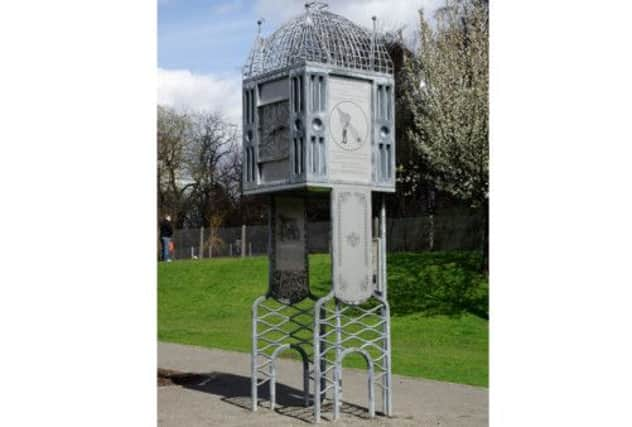Clydebank Singer factory clock artwork unveiled


The American corporation built its flagship European headquarters in Clydebank in 1885, after outgrowing its Glasgow premises. At its height it employed 15,000 staff on a 50-acre site, making more machines than its rivals put together.
The firm also created the largest clock face in the world - the Singer’s Clock, a 26ft-wide timepiece was mounted on top of a 226ft tower, with Roman numeral hours measuring 2ft high and the hands some 6ft in length. It took four men a quarter of an hout to wind the mammoth clock twice a week.
Advertisement
Hide AdThe tower was demolished in the 1960s, shortly after the clock had stopped ticking, with the factory itself closing in 1980. In the early 1990s the building was demolished.
West Dumbartonshire Council invited Elspeh Bennie to creat an artwork to commemorate both the clock and the factory itself.
Elspeth, who works at Ironhorse Studios, a blacksmithing company producing contemporary metalwork, explained: “There were two industries which dominated Clydebank’s industrial heritage – the shipyards and Singer sewing machine factory.
“It was felt the shipyards had already received a lot of attention and commemoration so we focused on Singer.
“The piece is based on the Singer clock tower, which was a dominant landmark in the area. It’s hoped it will act as a meeting point in the park with the clock part giving shelter.”
She added: “The original clock tower had a clock on all four faces but in this piece there is only one clock with panels used on the other three sides. These panels have different information on them relating to the original clock.
Advertisement
Hide Ad“The four legs each have a panel and two of them are decorated with the “RAF” decal - the gold decoration which was put on the black enamel of the machines. This particular decoration was one that was designed by one of the Clydebank employees.
“The inside panels relate to the previous industries that were on this site and pre-date the park.”
Advertisement
Hide AdYorkshire-based firm Cutting Technologies was on hand to help cut and engrave sections of the clock.
Director Jane Robinson said: “We’ve done a lot of work with artists, designers and sculptors and we always enjoy working through the creative process with them.
“It’s an honour to have helped create artwork which commemorates the world-famous Singer factory and to have played a part in recognising such an important part of Scotland’s heritage.”